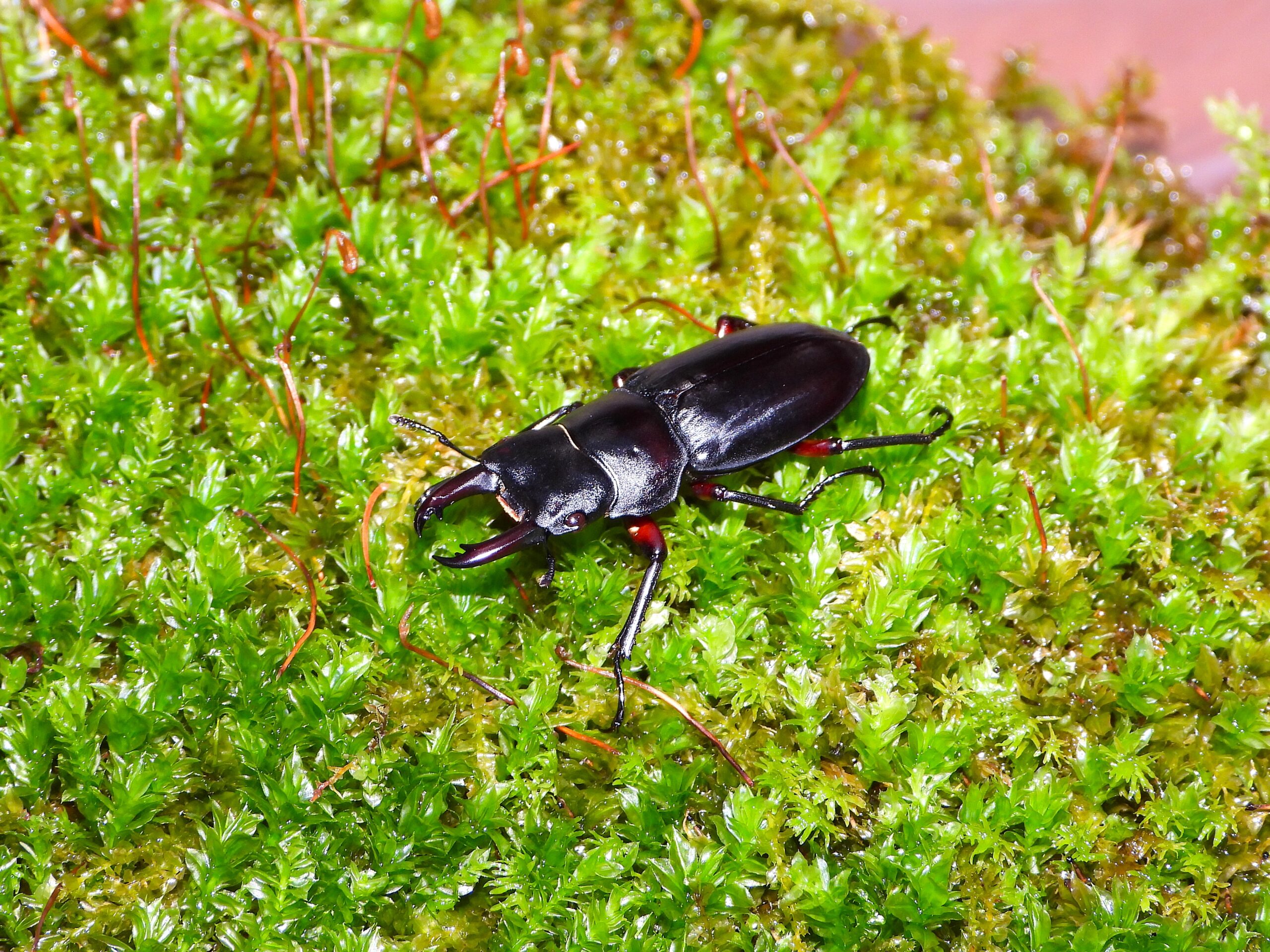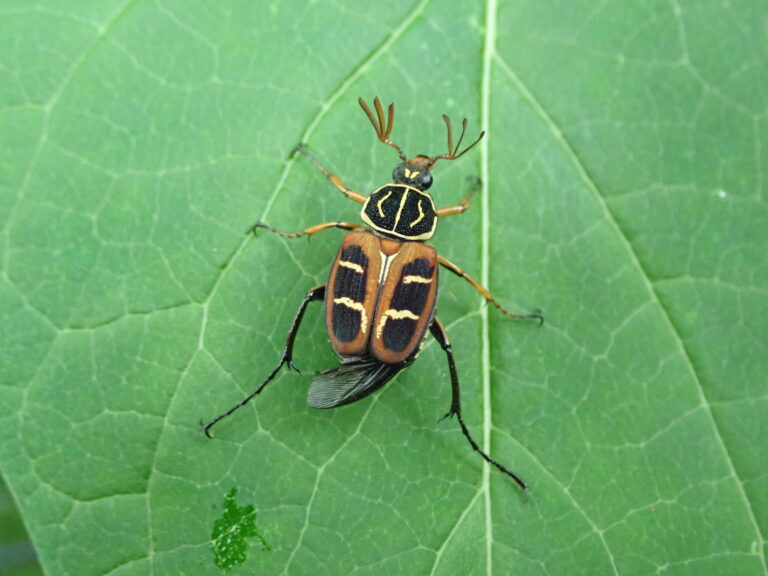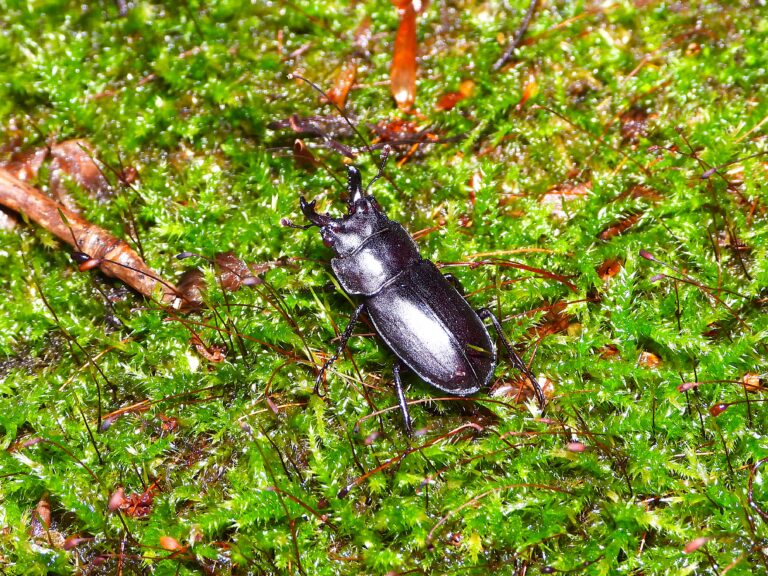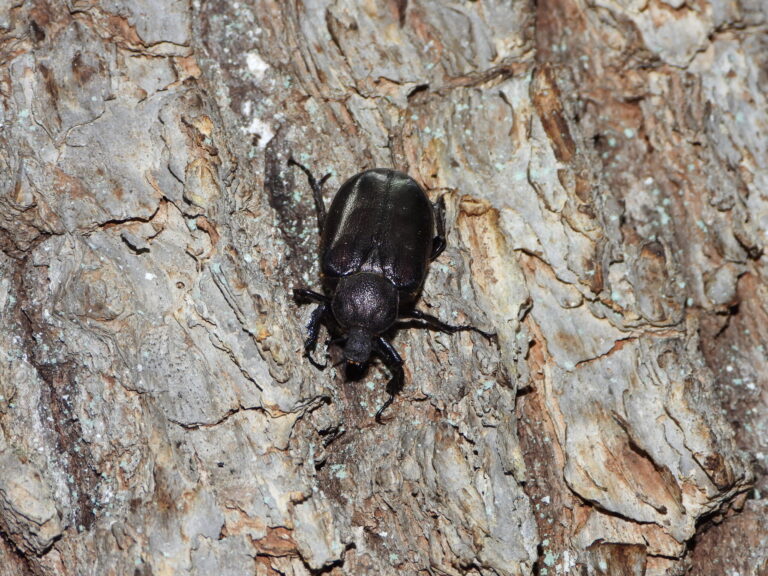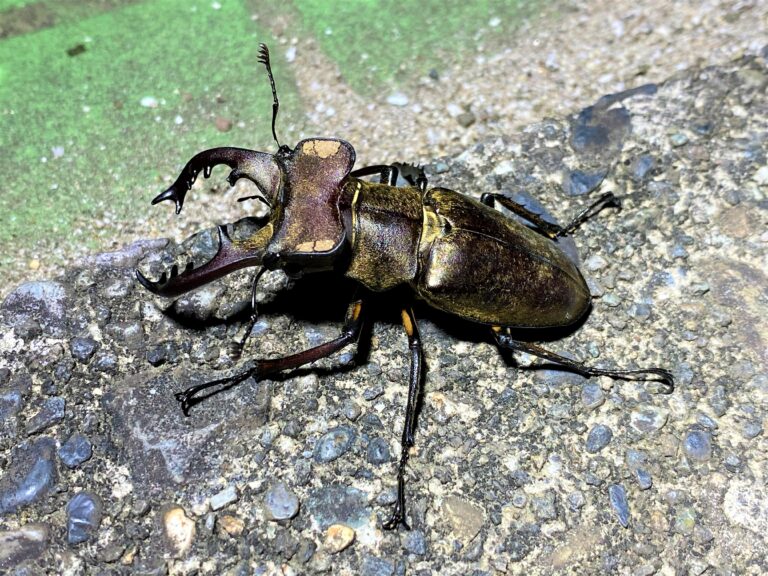Japanese Red-legged Stag Beetle (Dorcus rubrofemoratus) – Wildlife of Japan
Introduction
Dorcus rubrofemoratus is a cool-climate stag beetle found in the mountainous regions of Japan. It is easily recognized by its dark, flattened body and reddish legs and underside. Adults are most active in summer, visiting tree sap flows at night or sometimes flying to lights in the forest.
Appearance
Male Dorcus rubrofemoratus measure about 23–58 mm, and females 25–38 mm. Males have short, straight mandibles with inner teeth, giving them a powerful appearance. The femora and the underside of the body show a distinct red tint—most visible when viewed from below.
Habitat & Distribution
Dorcus rubrofemoratus occurs throughout Hokkaido, Honshu, Shikoku, and Kyushu, but is absent from the Ryukyu Islands. It inhabits cool, mountainous deciduous forests—especially beech and oak forests—usually between 800 and 1,500 meters in elevation. Adults appear from June to September.
Behavior
Adults feed mainly on tree sap, preferring willows, alders, and birches. They are nocturnal but may also be active during the day in cooler areas. They are capable fliers and sometimes visit lights in the mountains.
Diet
Adults consume sap from various hardwood trees. The larvae grow inside decayed wood—especially beech and oak—feeding on the softened material until pupation.
Reproduction & Life Cycle
Females lay eggs in well-rotted logs or stumps. The larval stage lasts one to two years, depending on temperature and nutrition. Pupation occurs within the wood, and adults may overwinter before emerging the next summer.
Conservation
The species is not currently endangered, but its population depends on the preservation of mature forests with plenty of dead wood. Habitat loss and over-collecting can locally reduce numbers.
Author’s Impression
Among Japan’s stag beetles, the red legs of Dorcus rubrofemoratus give it a truly special charm. It’s my personal favorite beetle. Try searching for it in high-altitude forests—you might be rewarded with a glimpse of its quiet beauty.

